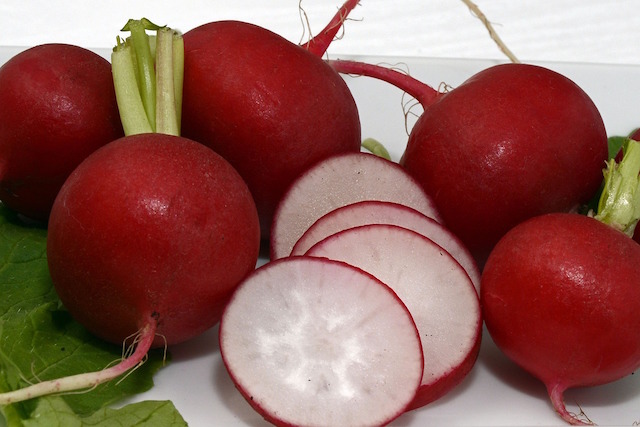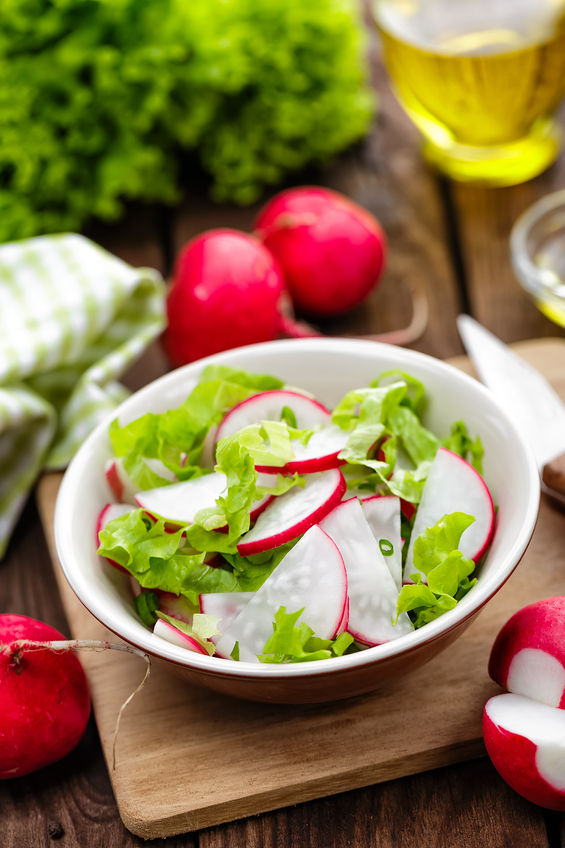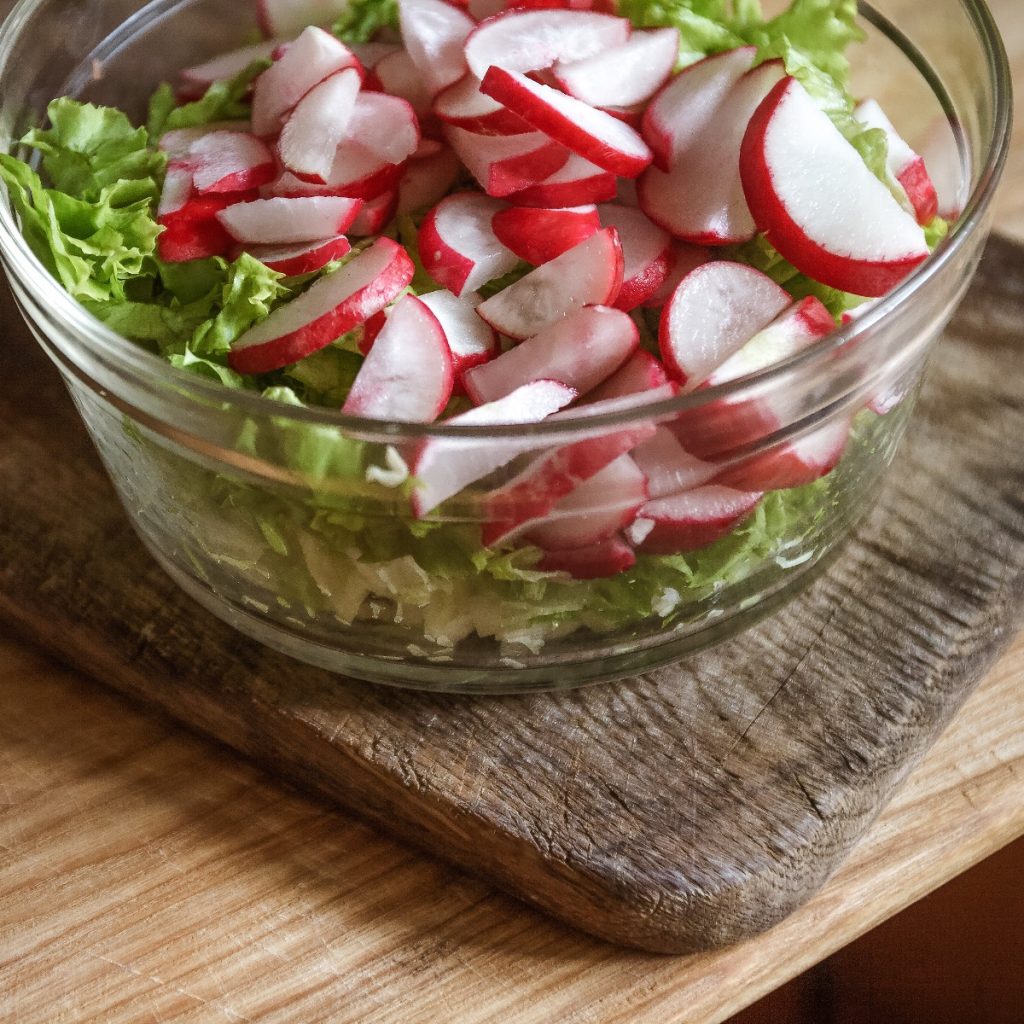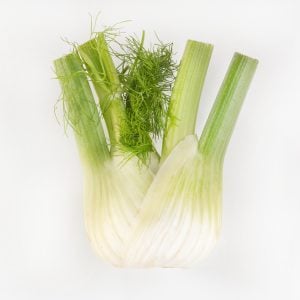Delicious Salad Greens Served with Marinated Radishes
This salad dressing recipe features marinated radishes. They can be added to any greens or used as a condiment for other dishes that work well with their peppery taste. I can see myself combining this dressing with chickpeas sometime soon.
You may be saying to yourself, RADISHES! Who wants to eat a salad with spicy, eye-watering radishes? You’ll be surprised when you try this; the dressing is not spicy. I’m guessing the creme fraiche cuts some of the peppery taste.
What About the Greens
I don’t think it matters if you serve this marinated radish dressing on one of the five types of lettuce, including butterhead, celtuce (think celery & lettuce), crisphead, looseleaf, and romaine or any of the other popular salad greens, including arugula, spinach, kale, chicory, and the list goes on.
I can see a future article describing all the different types of salad greens. Many of them, including varieties I had yet to learn, existed.
Radishes

Like lettuces and greens, there are a bunch of radish varieties around. When I think of a radish (I don’t think I ate one until sometime after college), I think hot, spicy, and crunchy. It has become an acquired taste over the years, and now I love them incredibly raw with a bit of salt.
While researching radishes, I came across this article: No Matter What You Think, Radishes Aren’t Actually Spicy. The author explains that radishes have no spicy flavor components like a hot pepper but get spiciness from other chemical compound combinations when you bite into one. The article is short and filled with chemistry terms but well worth the time if this type of detail excites you as it does me.
Radishes are a vibrant and crunchy root vegetable belonging to the Brassicaceae family, including cabbage, broccoli, and kale. With their peppery flavor and crisp texture, radishes are a versatile ingredient used in a variety of culinary dishes around the world.
Available in various shapes, sizes, and colors, radishes can range from small, round red varieties to elongated white or black varieties. The most common type, the red radish, has a bright red skin and a white interior, while black radishes have a dark exterior and a spicy flavor.
Radishes are prized for their crisp texture and peppery taste, which adds a refreshing and zesty element to salads, sandwiches, and appetizers. They can be eaten raw or cooked and are often sliced thinly and used as a garnish or topping for tacos, sushi, and soups. Radishes can also be pickled or roasted to enhance flavor and bring out natural sweetness.
In addition to their culinary uses, radishes are also valued for their nutritional benefits. They are low in calories and high in fiber, vitamins, and minerals, including vitamin C, potassium, and folate. Radishes are also rich in antioxidants, which help protect cells from damage caused by free radicals.
Chives
Chives are a versatile and flavorful herb in the Allium genus, which also includes onions, garlic, and leeks. With their delicate green stalks and mild onion flavor, chives are prized for enhancing the taste and appearance of various culinary dishes.
Native to Europe and Asia, chives are now cultivated and enjoyed worldwide. They are characterized by their slender, hollow stems and small, purple flowers, which are edible and add a pop of color to dishes. Chives are often garnished or finishing touches sprinkled over soups, salads, omelets, and baked potatoes to add a fresh and savory flavor.
Chives are used as a garnish and flavoring agent in cooking. They can be chopped and added to sauces, dips, dressings, and marinades to impart a subtle onion flavor without overpowering other ingredients. Chives pair well with a wide range of foods, including eggs, seafood, poultry, and vegetables, adding depth and complexity to dishes.
Preparing the Greens
Remove the leaves and tear them into manageable pieces, depending on the greens you use.
For example, romaine lettuce leaves will need to be torn into small pieces and iceberg lettuce, but if you decide on baby spinach, baby kale, or some combination of baby greens, there is no need to rip or tear.
By the way, you can always use a knife to cut larger greens into small pieces.
When in a hurry during the week, we do it all the time, but if you want a nicer-looking presentation, try tearing instead. It won’t change the taste of greens, but you do taste with your eyes, too.

Marinated Radishes and Greens Salad Recipe
Ingredients
- 6 radishes
- 1 shallot
- 3 tablespoons creme fraiche
- 1 lemon quartered
- olive oil
- 4 chives
- Greens - see above
- salt & pepper to taste
Instructions
Wash & Prep Ingredients
- It's always good to wash all the fresh ingredients. Even if you purchase triple washed greens in those convenient bags at the supermarket, it's still a good idea to give the greens a rinse.
- Remove the ends of the radishes, then thinly them. Peel the shallot and finely mince it. Depending on its size, you want about 3 tablespoons.
- Quarter the lemon and remove as many seeds as you can. Slice the chives thinly.
Marinate the Radishes
- Combine the radishes, creme fraiche and shallots in a bowl. Squeeze the juice from the lemon quarters over the radishes, then drizzle a little olive oil on top.
- Season with salt and pepper and stir to combine all the ingredients.
- Let this marinate for at least 15 minutes, but give it a stir occasionally.
Prepare the Salad
- Into a large salad bowl, combine the greens with the marinated radishes and the chives. Toss well to combine all the ingredients.
- Taste and adjust seasoning with salt and pepper.
- Serve
















